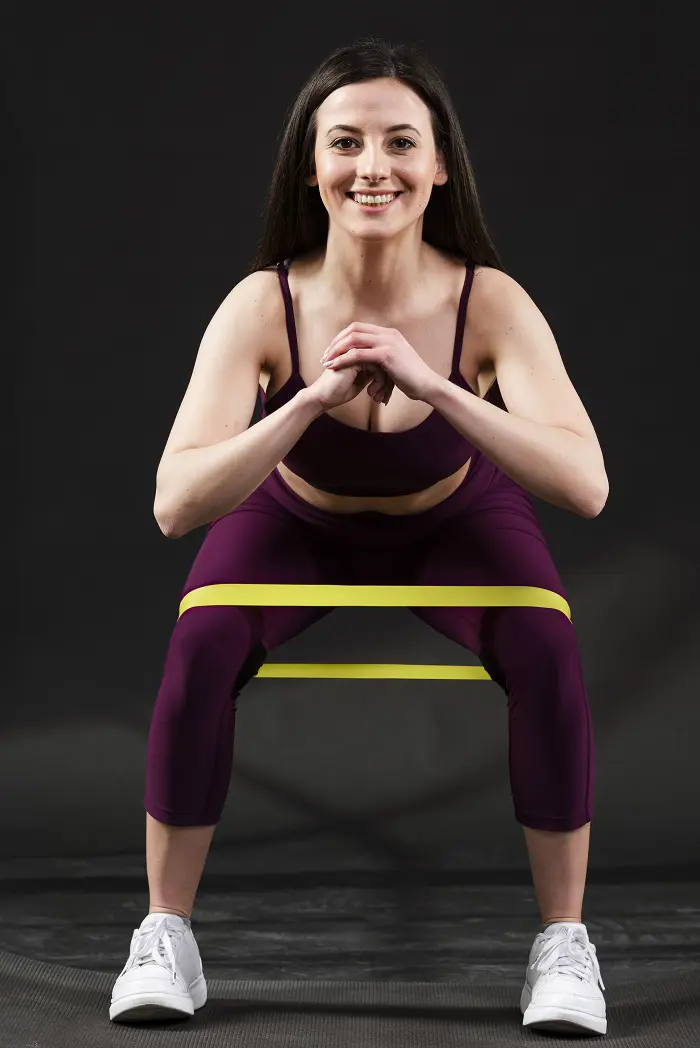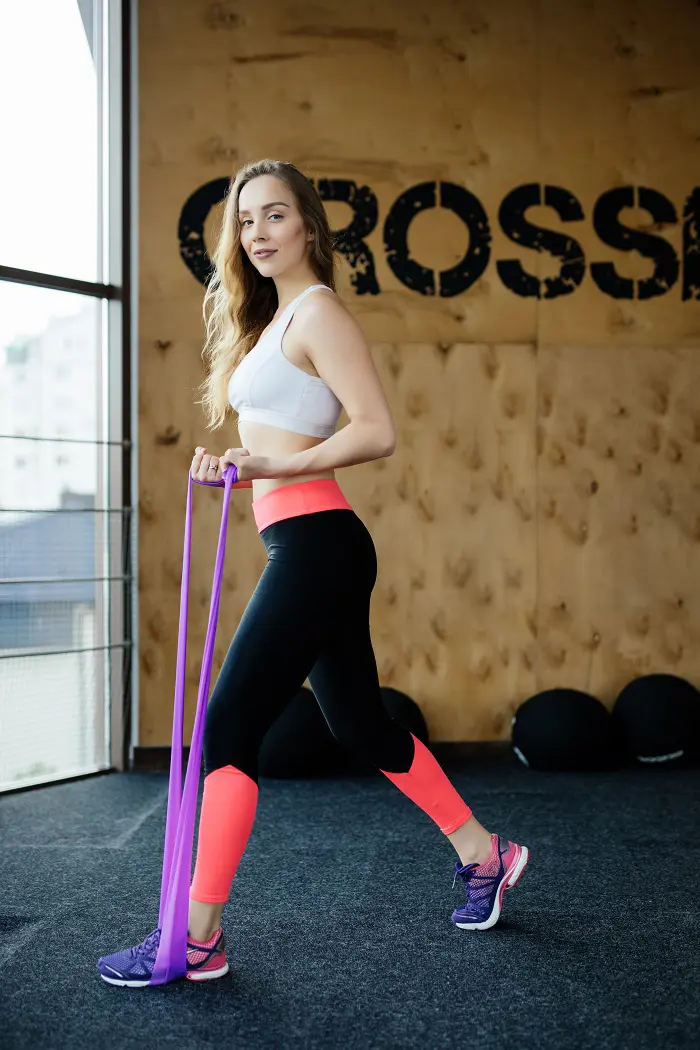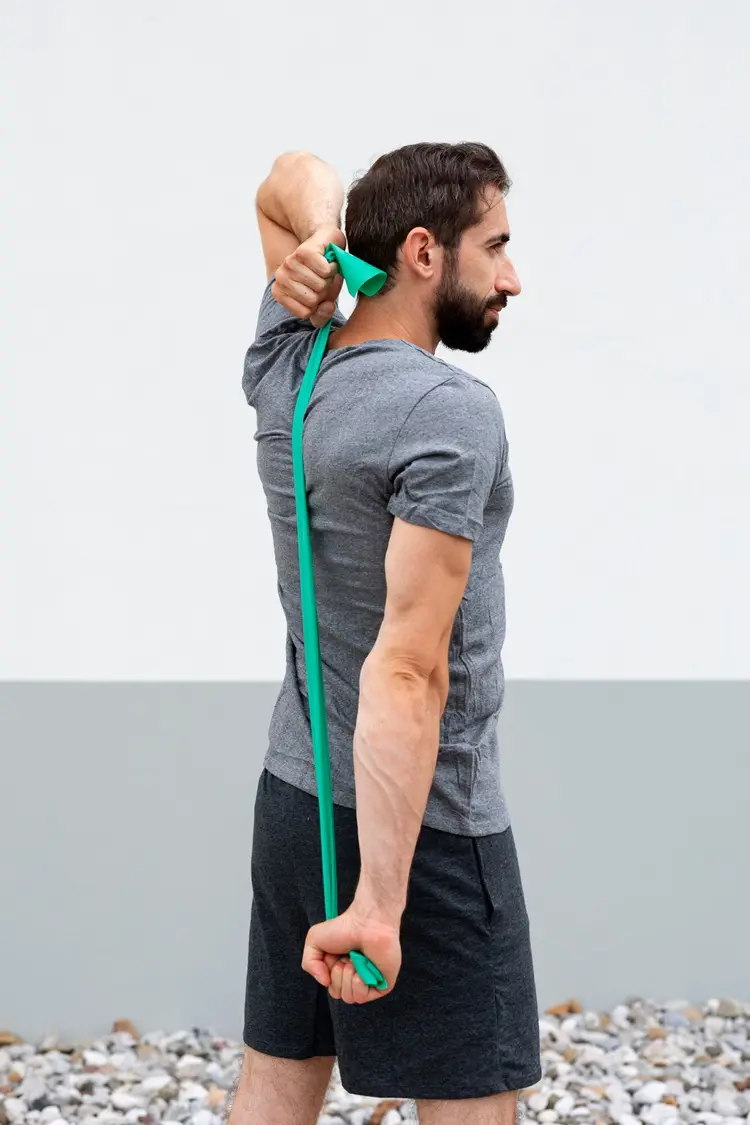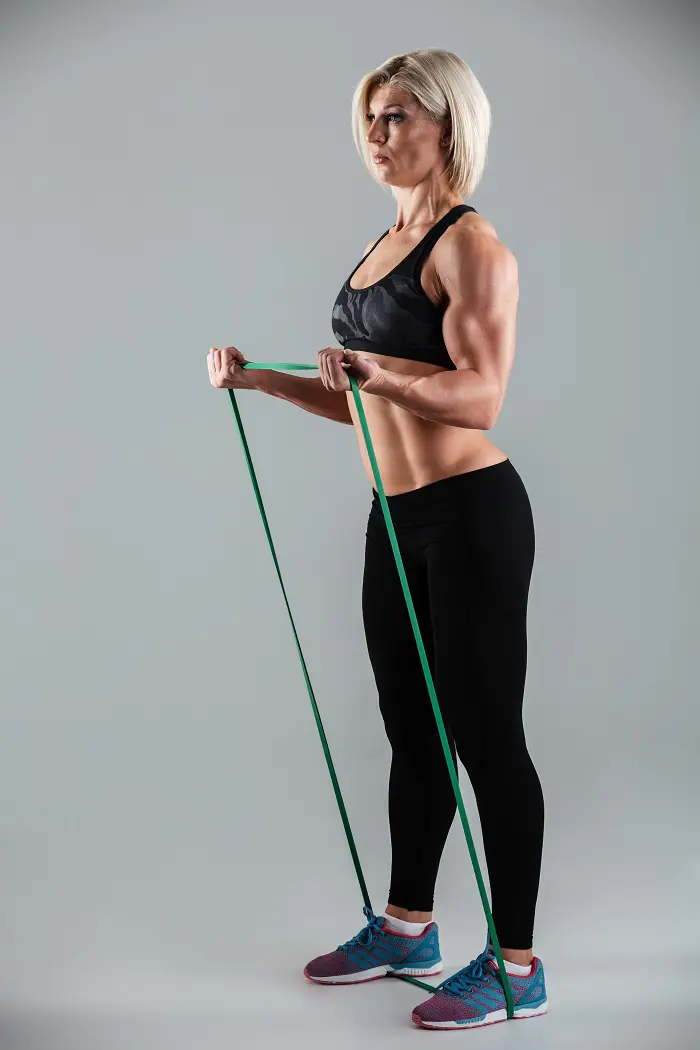12 Easy SI Joint Stretches And Exercises To Reduce Pain
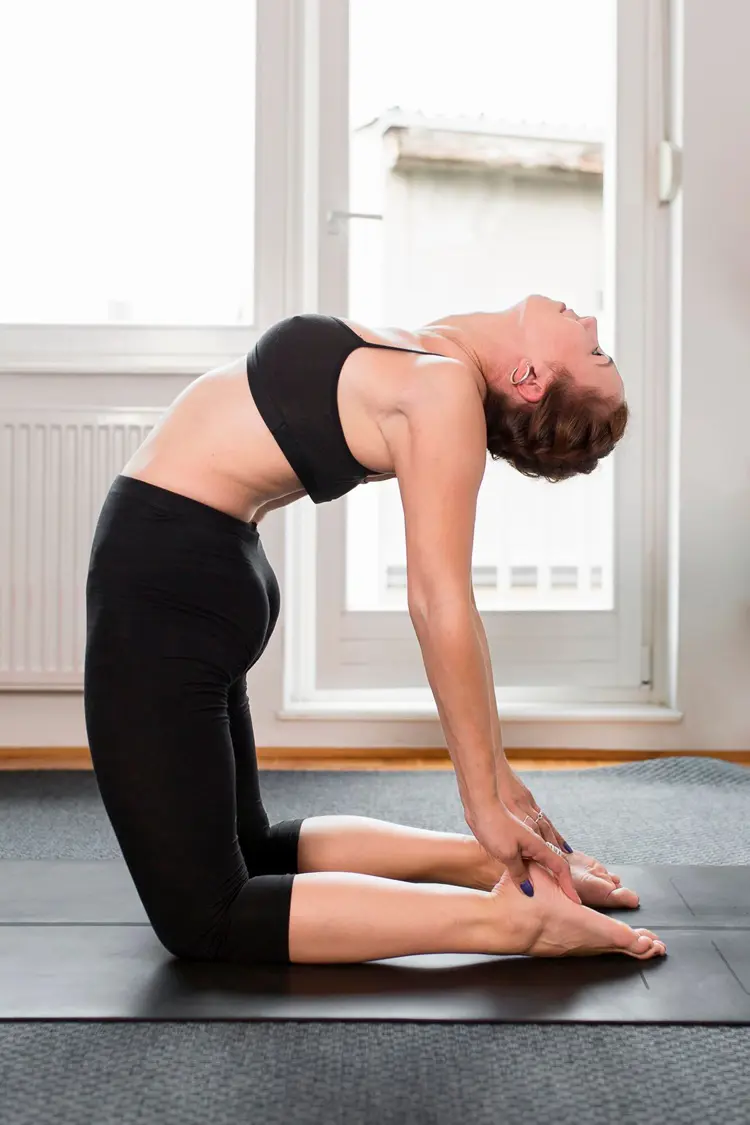
Pain in the SI joint can be frustrating, as it makes basic day-to-day movements uncomfortable. However, specific stretches and exercises can help reduce this discomfort by increasing mobility and flexibility around the sacroiliac joint.
These exercises focus on strengthening important areas of the joint and relieving tension in the surrounding muscles. So, let's explore 12 awesome SI joint stretches to regain your balance and comfort.
1. Child’s Pose
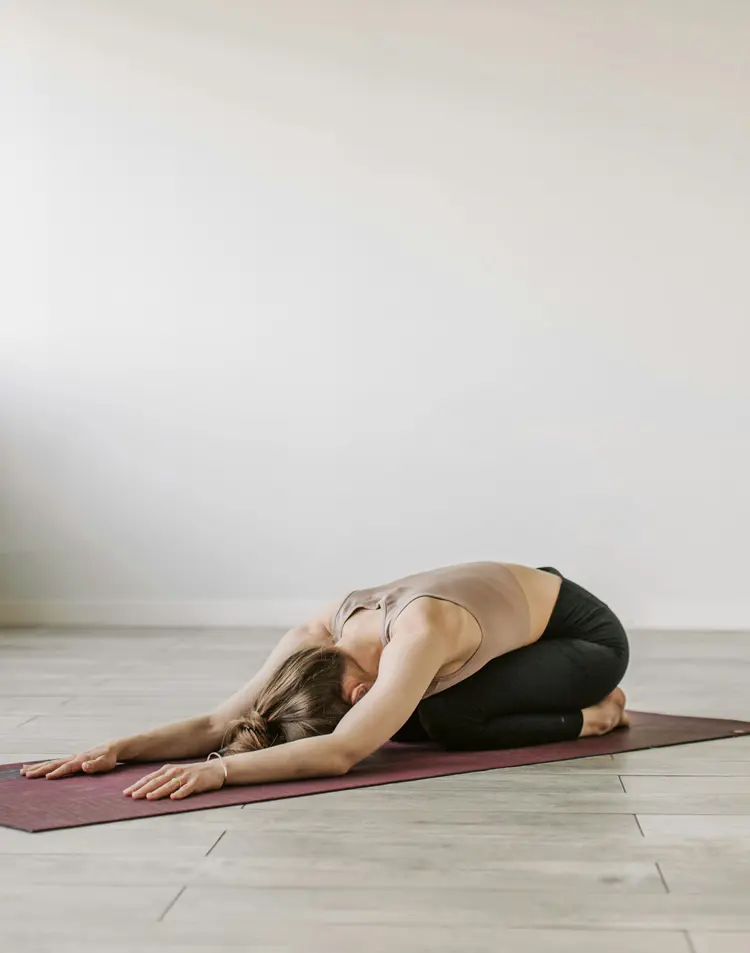
Let's begin the list with the Child's Pose. It is a mild stretch for SI joint pain that helps to release strain in the hips and lower back. This pose lightly stretches the glute muscles, encouraging better pelvic mobility and alignment.
Child's Pose can be beneficial in improving flexibility and contributing to the long-term overall health.
Steps To Follow:
- Start by kneeling on a mat and touching the toes behind you.
- Sit back onto your heels to relieve some pressure off your knees. Also, allow your hips to release down toward your heels.
- Reach your arms forward by fully extending them on the ground.
- Lower your forehead and chest down toward the floor, nearly touching the surface.
- Relax your neck and shoulders and allow the body to unwind.
- Inhale deeply and feel the stretch in your arms, legs and hips.
- Hold the pose for 30 seconds and return to the starting position.
2. Supine Twist
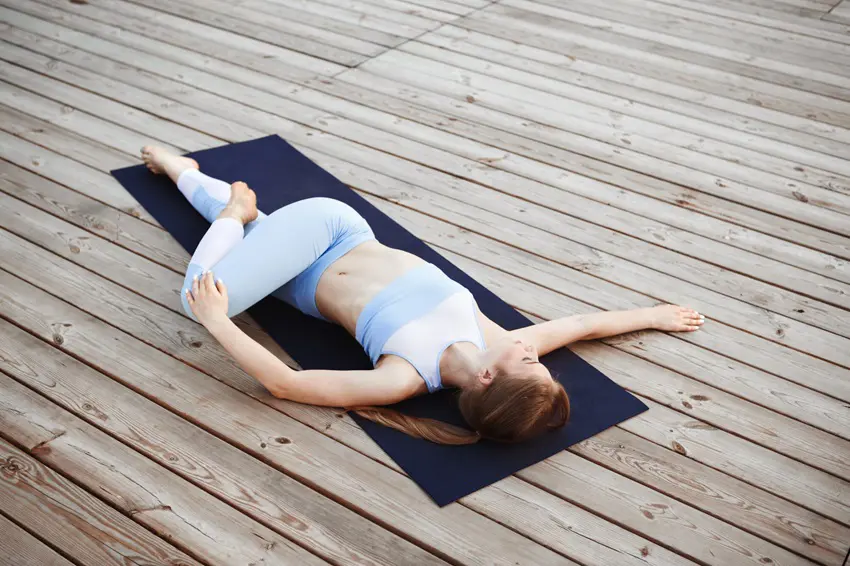
The Supine Twist is a wonderful gluteus medius exercise that also helps facilitate sacroiliac joint by encouraging proper pelvic and lower back posture. This gentle stretch has a soothing impact on the lower spine and aids in easing flare-ups.
Steps To Follow:
- Lie flat on your back on a comfy surface (such as a yoga mat).
- Keep the arms at your sides and straighten your legs.
- Gently bend one knee and raise it to your chest.
- Now, allow the bent knee to drop to the other side of the body.
- Spread your arms wide in a T-shape for extra stability.
- Turn your head in the opposite direction of the knee.
- Take a deep breath and maintain this position for 20 to 30 seconds.
- Repeat on the opposite side after completing the stretch.
3. Cat-Cow Stretch
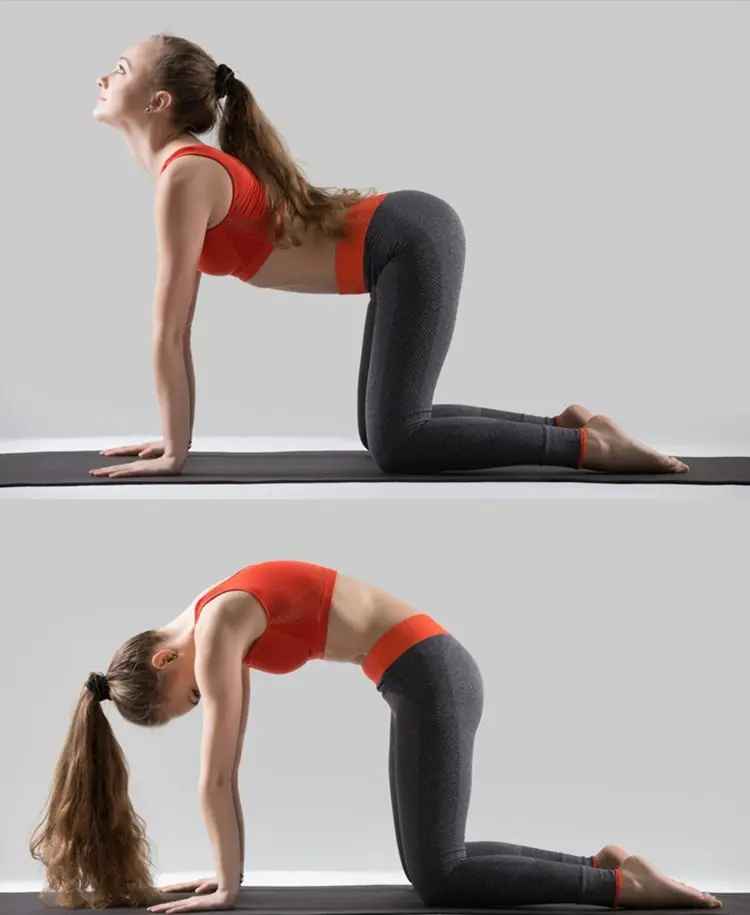
Imagine alternating between the elegance of a stretching cat and the serenity of a grazing cow. Cat-Cow Stretch is your key to a spine that moves with fluidity and ease. It's a rhythmic, flowing movement that works the hips and back.
Match your breath to each action for a more fluid flow. Also, start with soft movements until your body becomes more relaxed.
Steps To Follow:
- Begin on all fours by placing your knees beneath your hips and wrists under your shoulders.
- Lower your belly to the floor, lift the chest, and look up (Cow pose).
- Draw your belly button inward and tuck your chin to the chest as you round your back (Cat pose).
- Maintain a constant flow when you move between these poses.
- Pay attention to the breathing pattern to control the rhythm and make every movement deliberate.
- Continue doing this for 5 to 10 rounds or until your back feels flexible and relaxed.
4. Single Knee-To-Chest Stretch
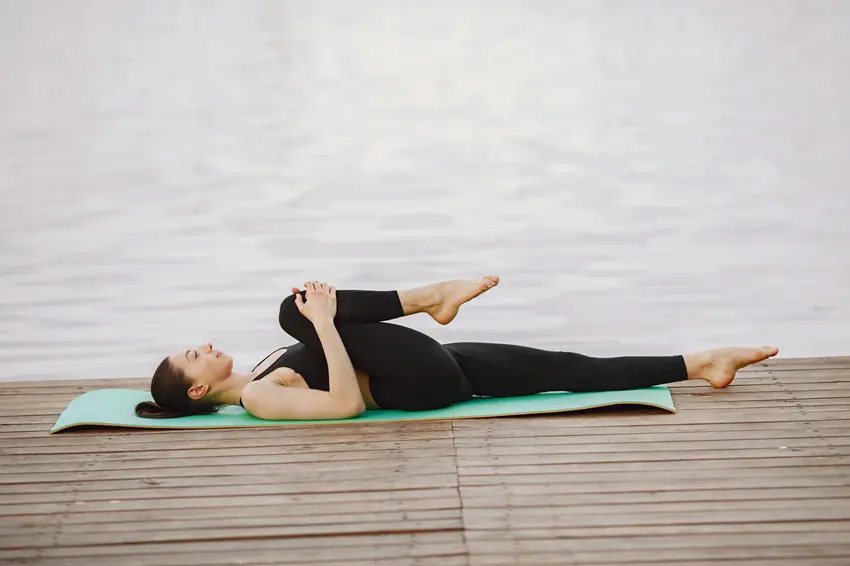
This lower back exercise is all about giving your body and leg a big, appreciative hug! Pulling your leg in softly while your back unwinds is similar to pressing the "reset" button on the tightness of the joint.
Consider it a brief relaxation exercise for your lower back and SI joint. Visualizing your body growing stronger with each pull will help you gain extra benefits and preparation to tackle the day with ease.
Steps To Follow:
- Make sure you're comfortable on a mat before lying down on your back.
- Keep your legs relaxed and slightly apart as you stretch them out.
- Bring one leg slowly up to your chest while bending the knee.
- Put your hands on the knee and gently draw it closer.
- Continue to extend the opposing leg by pressing it into the floor.
- Perform the workout for 20 seconds to retain the comfort.
- Carefully release the knee and switch to the other side.
5. Downward Facing Dog Pose
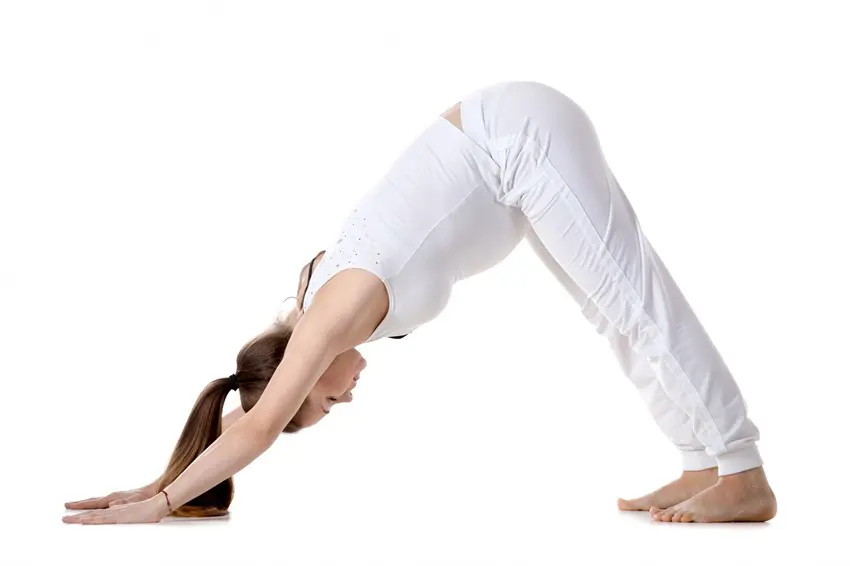
By evenly engaging the muscles around the hips and lower back, a downward-facing dog helps stabilize and relieve pain in sacroiliac joint.
It encourages a healthy range of motion in the sacroiliac region and supports the lower back gently. Frequently doing this exercise can promote long-term mobility for a healthier SI joint.
Steps To Follow:
- First, get down on your hands and knees with your palms flat on the ground.
- Lift your knees gradually while tucking the toes underneath. Straighten your legs as much as you feel comfortable.
- Raise your hips to make an inverted "V" with your body.
- Press your hands into the ground by keeping the arm straight.
- Lean your head back between your arms and look down at your knees.
- Maintain proper balance and control throughout the position.
- Lastly, lower yourself back down after taking a few long breaths.
6. Figure Four Stretch
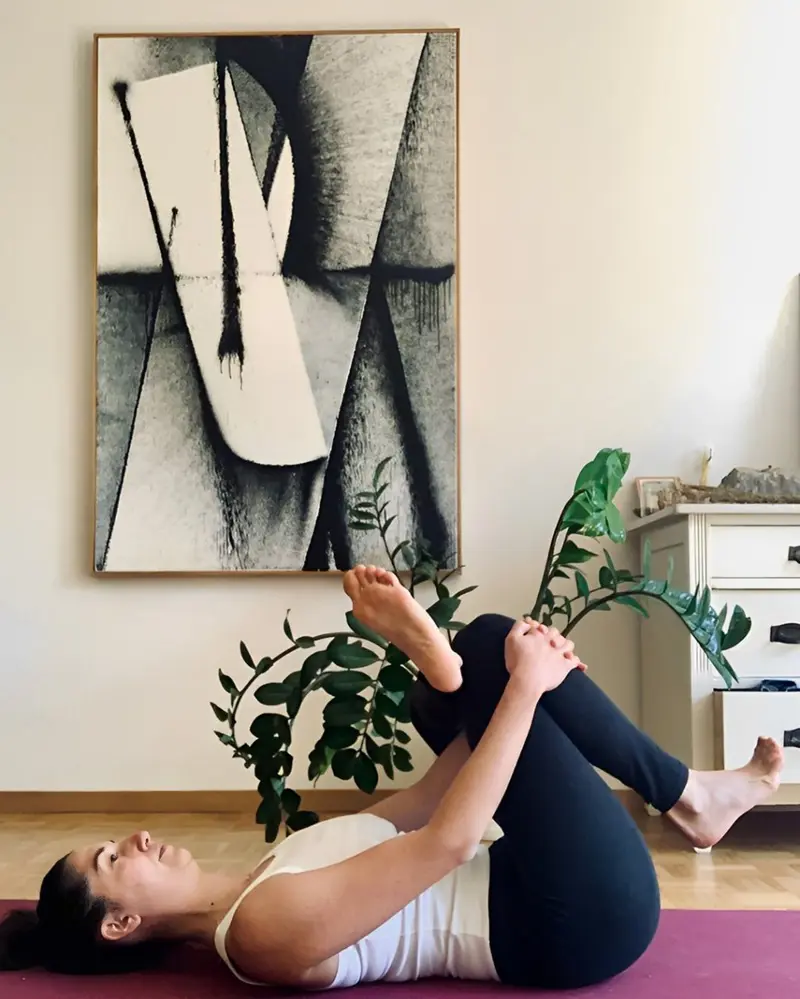
Another easy workout to relax your SI joint is the Figure Four Stretch. It includes a small "figure 4" adjustment to the knee that makes a big impact when stretching the hip and leg muscles. They are popular with both athletes and desk workers thanks to their straightforward, easy-to-access benefits.
Steps To Follow:
- Relax your body on the floor while lying flat on your back.
- Bend your knee, lift one leg, and cross it over the other thigh.
- Hold the bent knee with your hands.
- Feel the stretch across the sacroiliac joint of the crossed leg as you gently draw it toward your chest.
- Retain a relaxed head and neck while taking deep breaths.
- Gradually release and switch sides after 20 to 30 seconds of holding.
7. Bird Dog Exercise
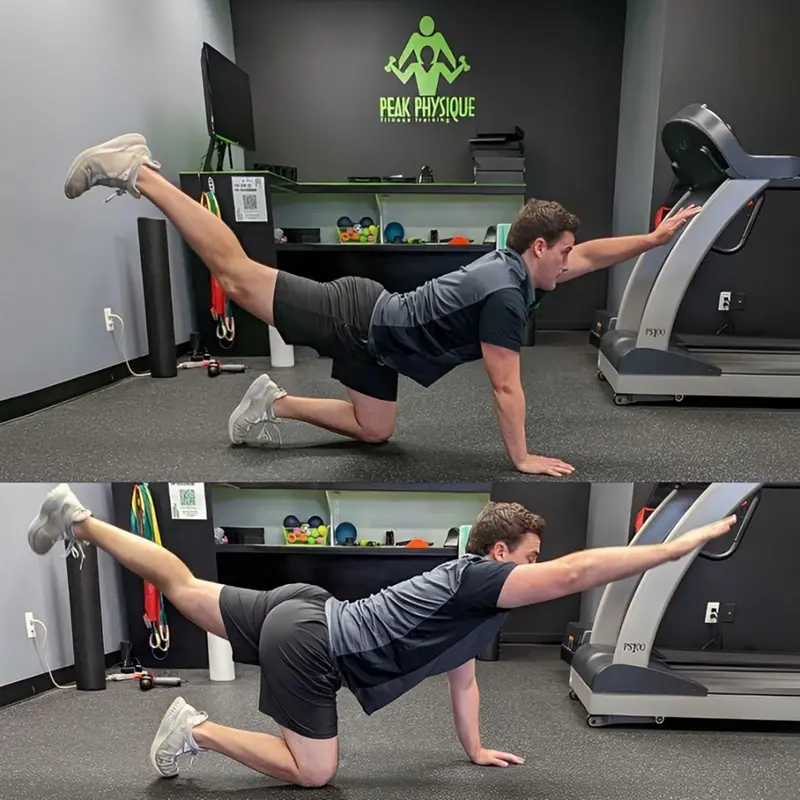
Bird Dog is a popular exercise for supporting and reducing discomfort in the sacroiliac joint. It is similar to a game of "reach for the stars" while maintaining balance. Imagine extending one arm and the opposite leg - as if steadying yourself against a strong wind.
Steps To Follow:
- Begin on your hands and knees, and place your knees behind your hips to provide a secure base.
- Raise the left arm and stretch it forward by keeping the right wrist engaged.
- Keep your foot flexed and simultaneously elevate the right leg (extend it behind you).
- Prevent the back from arching or drooping.
- Slowly lower your arm and leg back to the ground after a brief period.
- Feel the pain ease as you switch sides at a steady pace.
8. Butterfly Stretch

It is a gentle way to relax the SI joint by opening up the hips and encouraging pelvic mobility. Pressing your knees softly towards the floor and bringing the soles of your feet together helps to release tension around the sacroiliac joint.
This soothing stretch also focuses on hip flexors and inner thighs, improving joint flexibility.
Steps To Follow:
- Take a seat on the floor by extending the legs in front of you.
- Bend your knees outward, bringing the soles of your feet together.
- Press the feet inward toward your body by engaging the legs downward.
- Now, sit up straight with an open chest and straight back.
- Take a deep breath and focus on driving the hips and lower back.
- Notice your inner thighs and hips start to stretch as you slowly lower your knees.
9. Wall Sit
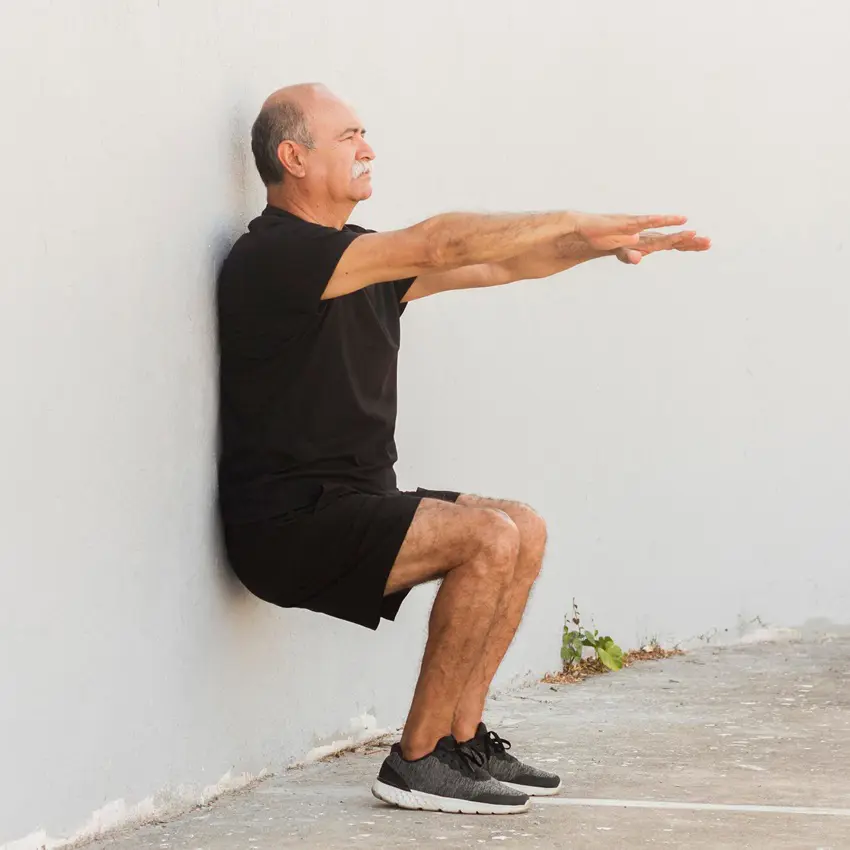
Wall sits are sometimes called "the chair that never moves" because they target your SI joint and legs while keeping you perfectly still. They are an isometric workout that tests your endurance and strength - ideal for toning while helping to stabilize your sacroiliac joint.
Keep your knees aligned directly above your ankles to execute a perfect Wall Sit. This aids in maintaining proper form and protects your SI joint.
Steps To Follow:
- Stand with your back against the wall (keeping a few inches of space between the legs and wall).
- Bend your knees as you slide your back down the wall.
- Make sure your thighs are parallel to the floor (place the knees exactly above your ankles).
- Push your lower back against the wall for added stability.
- Keep your posture comfortable and steady throughout the exercise.
- Also, place your hands in front or at your thighs for balance.
- Perform this stretch for 20 to 40 seconds.
10. Glute Bridge
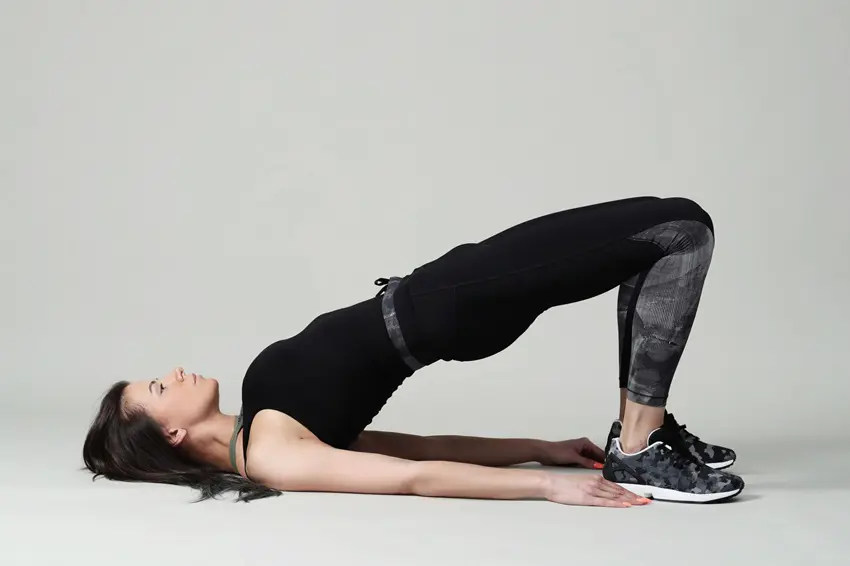
It is a straightforward but effective pelvic support workout that helps increase mobility and soothe the SI joint. Elevating the hips toward the ceiling also eases your glutes, hamstrings, and core muscles.
Thus, the glute bridge assists in loosening pressure on the lower back and promotes a healthy spine.
Steps To Follow:
- Lie on your back by bending your knees.
- Then, position the arms at your sides for support (palms facing down).
- Push through the heels to lift your hips towards the roof.
- Squeeze your glutes at the top and make sure your body is in a straight line.
- Hold for a few seconds and drop the hips back to the floor with control.
- Repeat for a desired number of reps in a consistent rhythm.
11. Cobra Pose
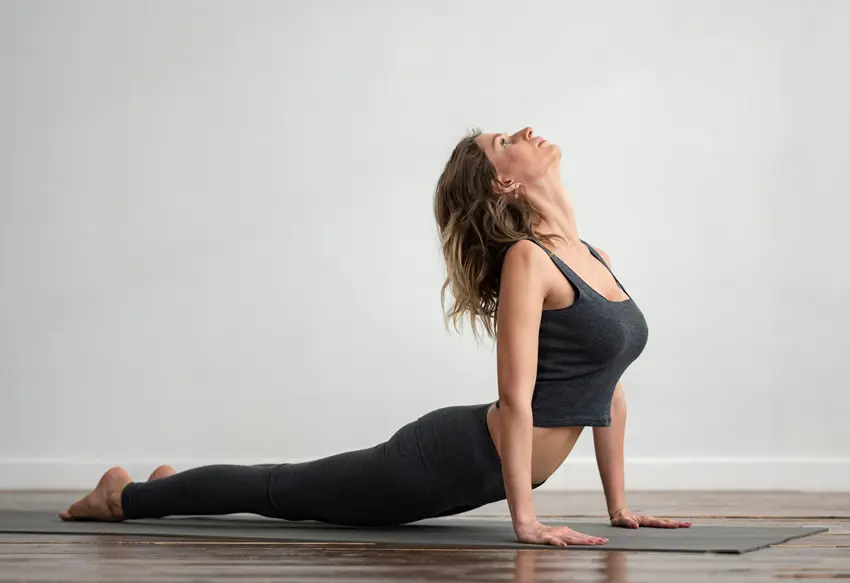
Cobra Pose is a great way to embrace your inner snake, adopting the qualities of cobra-like strength, grace, and flexibility. Picture yourself arching your back gracefully and raising your chest high- like a cobra ready to strike!
This yoga stance has its roots in the ancient Hatha Yoga tradition, where it was utilized to lessen the pain in the SI joint. It also gives your back a deep stretch in a fun and effective manner.
Steps To Follow:
- Outstretch your leg and lie on your stomach.
- Place your hands beneath your shoulders and the elbows close to your body.
- Engage your thighs and press the top of your feet into the ground.
- Take a breath and raise your chest softly by supporting the movement with your arms.
- Open your chest and arch your back to extend your spine upward.
- Maintain the stretch for a few seconds and slowly lower yourself to the ground.
12. Quad Stretch
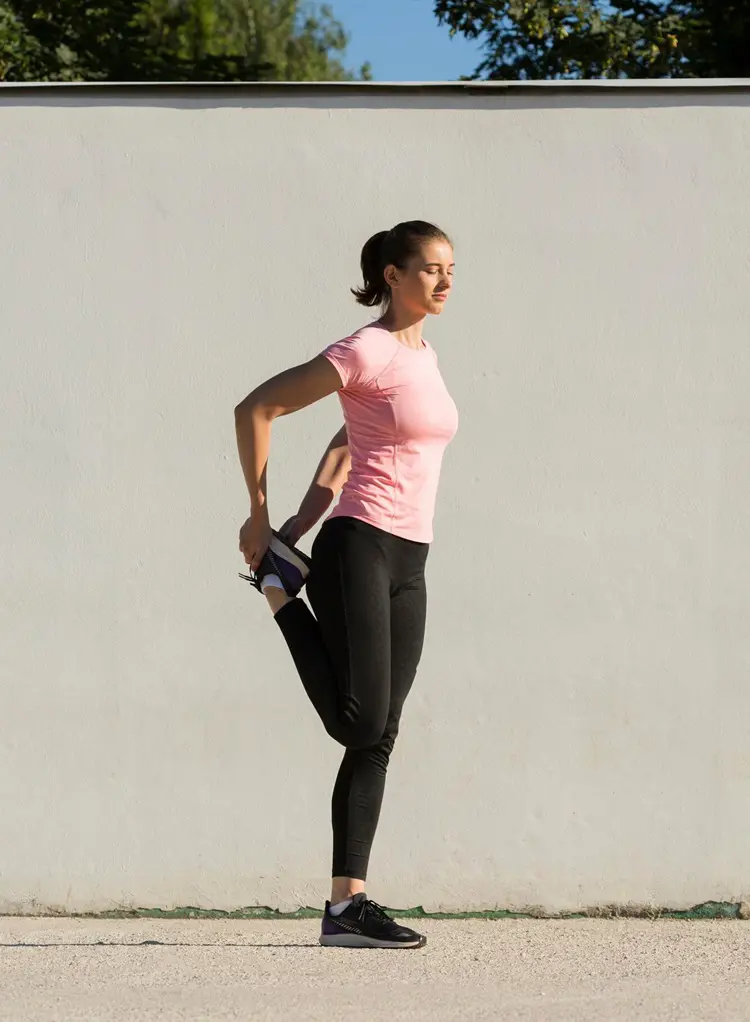
Last exercise on the list is Quad Stretch. By focusing on the muscles near the hips, the Quad Stretch is a simple exercise that can help minimize SI joint aches. A tight quadriceps can strain the sacroiliac joint, so loosening them aids in reestablishing alignment and balance.
Plus, the stretch eases hip pressure and increases the range of motion by gradually expanding these muscles. It is also an excellent approach for supporting the pelvis and lower back to function smoothly.
Steps To Follow:
- Stand tall and place your feet hip-width apart for balance.
- Bring your foot up behind your glutes while bending the knee.
- Grab your ankle or the top of your foot.
- Feel the front of your thigh and sacroiliac joint stretch as you bring the foot closer to your torso.
- Also, keep your back straight to prevent arching.
- Rest your other hand on a chair or wall (if you require more support).
- Switch legs after doing the stretch on one leg.
- Complete the required number of reps.
When To Consult A Doctor?
It is important to know when to see a doctor while doing SI joint exercises. Mild discomfort occurs as your muscles adjust, but sharp or chronic pain is not natural. If you suddenly feel pain in your lower back or pelvis during stretches for SI joint, it may be a sign of an injury or underlying condition that requires medical care.
Always look for warning signals such as swelling and bruising after performing these workouts. Stop exercising and get medical help if your pain gets worse or doesn't go away with rest over time.
Similarly, keep in mind that ignoring severe discomfort might make it worse and possibly result in long-term problems. Consulting a physician can help identify any root causes (such as sciatica, SI joint dysfunction, or ligament strains) that may require specialized treatment.
Exercise To Avoid During SI Joint Pain
Choosing the right stretches for SI joint pain is essential while treating it. However, some exercises may worsen the condition by putting excessive strain on the joint and slowing down the recovery process.
So, let's identify which workouts should be avoided when performing sacroiliac pain stretches:
- Deep squats or heavy-weighted squats
- Lunges with excessive range of motion
- High-impact activities like running or jumping
- Side planks with added weight
- Overhead weightlifting exercises
- Twisting movements, such as Russian twists
- Full sit-ups or crunches
Disclaimer: The information provided in this article is for educational purposes only. They should not be taken as medical advice.
Recent posts
Exercises
Exercises
10 Trapezius Stretches To Relieve Muscle Stiffness
Responsible for rotating the scapula, the trapezius muscles are triangular in shape and located in the upper back. They also play a role in extending the neck and contribute to arm stability. Since this muscle does a lot of work, it can become stiff ...
Exercises
20 Different Variations Of Push Up For Beginner To Experts
Pushups are commonly practiced for building upper body strength - and for good reason. They could also be the very first workout we ever tried. No expensive equipment is needed, and it can be done from the comfort of our home. If we are getting bored...
Exercises
20 Squat Variations For Every Fitness Level
Squats have been a popular exercise for many fitness enthusiasts. They are effective for strengthening key lower-body muscles like the glutes, hamstrings, quadriceps, and calves. Practicing them daily can lead to a toned butt - an aesthetic goal for ...
Exercises
12 Golfers Elbow Exercises For Quick Pain Relief
Golfer’s elbow, aka medial epicondylitis, happens when the tendons connecting your forearm muscles to the bony inside part of your elbow get inflamed. This can cause pain and throw off your physical well-being. To tackle this, there are plenty ...
Exercises
11 Exercises To Gain Weight For Bulking Up At Home
Bulking up at home is possible with the correct exercises and a well-structured diet. You do not need any fancy equipment or a complex setup to perform these workouts. Focusing on compound movements and gradually increasing intensity will maximize yo...
Exercises
12 Serratus Anterior Exercises For Better Shoulder Health
The serratus anterior, aka the boxer muscles, plays a key role in shoulder stability and range of motion. Strengthening this muscle not only enhances mobility but also helps prevent injuries and improve posture. Including targeted workouts in your fi...


